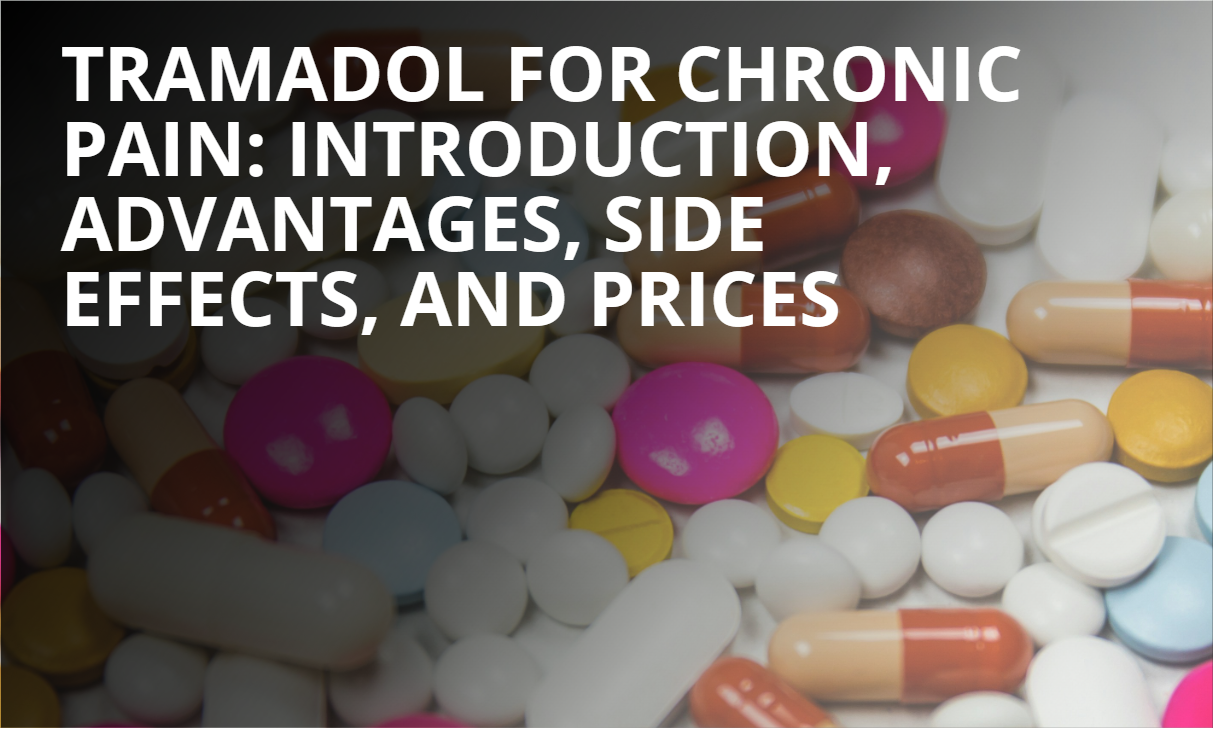Chronic pain can feel like a never-ending battle. Imagine having a tiny drummer inside your body who never takes a break. If this sounds all too familiar, you might be on the lookout for a trusty sidekick to help you fight this relentless foe. Enter Tramadol, the unsung hero of the pain relief world. In this article, we’ll explore Tramadol for chronic pain—its uses, benefits, side effects, and how much it might cost you. We’ll also sprinkle in some humor because, let’s face it, we could all use a laugh when dealing with pain.
Introduction to Tramadol
Tramadol is like the friendly neighbor who always has a spare cup of sugar (or in this case, a helping hand for your pain). It’s an opioid pain medication, but don’t worry—it’s not the scary kind you hear about on the news. It works by changing the way your brain perceives pain, making it easier for you to get through the day.
Tramadol is typically prescribed for moderate to moderately severe pain. If you stubbed your toe, you might just need an ice pack. But if you’re dealing with chronic pain that just won’t quit, Tramadol might be the answer. It’s often used for conditions like arthritis, fibromyalgia, and even after surgery to keep the pain at bay.
Advantages of Tramadol for Chronic Pain

So, why should you consider Tramadol for chronic pain? Here are a few reasons:
- Effective Pain Relief: Tramadol doesn’t just mask the pain; it goes to the root of it. By altering how your brain and nervous system respond to pain, it provides significant relief.
- Dual Action: Tramadol is a multitasker. It not only binds to opioid receptors but also increases levels of serotonin and norepinephrine, two neurotransmitters that help control pain.
- Fewer Side Effects: Compared to stronger opioids, Tramadol tends to have fewer side effects. It’s less likely to cause severe respiratory depression, which is a fancy way of saying you won’t feel like a fish out of water gasping for breath.
- Versatile: Whether your pain is from an injury, surgery, or a chronic condition, Tramadol can be a versatile part of your pain management plan.
- Available in Different Forms: Tramadol comes in tablets, capsules, and even liquid form. You can take it how it suits you best—no need to swallow a horse pill if that’s not your thing!
Side Effects of Tramadol for chronic pain

Now, let’s talk about the elephant in the room—side effects. While Tramadol for chronic pain can be a game-changer, it’s not without its quirks. Here are some of the common ones:
- Dizziness: You might feel like you’ve just stepped off a merry-go-round. If you find yourself wobbling, take it easy and avoid activities that require full mental alertness.
- Nausea and Vomiting: Sometimes, your stomach might not be too happy about the new visitor. Eating a light snack before taking your dose can help settle things down.
- Constipation: Tramadol can slow down your digestive system. Drinking plenty of water and eating fiber-rich foods can keep things moving smoothly.
- Headache: Ironically, while it’s helping with your other pain, Tramadol might give you a headache. If this happens, talk to your doctor about possible solutions.
- Sweating: You might find yourself feeling a bit more like a sauna than usual. Light, breathable clothing can help you stay comfortable.
- Fatigue: You might feel more tired than usual. Think of it as your body’s way of saying, “Hey, let’s take a nap!”
- Dependence and Withdrawal: Like any opioid, there’s a risk of dependence. It’s important to follow your doctor’s instructions and not go rogue with your dosage. Stopping Tramadol suddenly can lead to withdrawal symptoms, so always consult your doctor before making changes.
Prices of Tramadol
Alright, let’s talk about the cost. How much will this pain-relief superhero set you back?
The price of Tramadol can vary depending on where you live, whether you have insurance, and which form of the medication you’re using. Here’s a rough breakdown:
- Generic Tramadol: This is usually the more affordable option. A 30-day supply of 50 mg tablets can cost anywhere from $10 to $50 without insurance. If you have insurance, your copay might be even lower.
- Brand-Name Tramadol: If you’re going for the brand-name version, like Ultram, be prepared to pay a bit more. A 30-day supply can range from $100 to $200 without insurance.
- Extended-Release Form: If you’re taking the extended-release version, prices can be higher. A 30-day supply might cost between $50 and $150 for the generic version, and $200 to $400 for the brand-name version.
- Insurance Coverage: Many insurance plans cover Tramadol, but it’s always good to check with your provider. You might have a small copay, making it much more affordable.
- Discount Programs: Don’t forget about discount programs and pharmacy coupons. Websites like GoodRx can help you find the best prices and save you some cash.
Conclusion
Living with chronic pain is no joke, but finding the right treatment can make all the difference. Tramadol for chronic pain might just be the ally you need in your battle against that relentless discomfort. With its effective pain relief, dual action, and versatility, Tramadol stands out as a viable option.
Of course, like any superhero, it comes with its own set of challenges. Being aware of the potential side effects and managing them with the help of your doctor can ensure that Tramadol is a safe and effective part of your pain management plan.
And let’s not forget about the cost. While it can vary, there are plenty of ways to keep it affordable, from opting for generic versions to using discount programs. So, if you’re tired of that little drummer boy wreaking havoc on your life, talk to your doctor about Tramadol. It might just be the harmonious tune you’ve been looking for.
Disclaimer
The information provided on this blog regarding medicine prices and side effects is solely based on data collected from public domains. I am not a doctor or medical professional. While I strive to provide accurate and up-to-date information, I cannot guarantee the absolute accuracy or completeness of the data. It is always recommended to consult with a qualified healthcare professional or doctor for personalized medical advice and information. The content on this blog should not assume any responsibility for any consequences arising from the use of the information on this blog.
Thank you.
